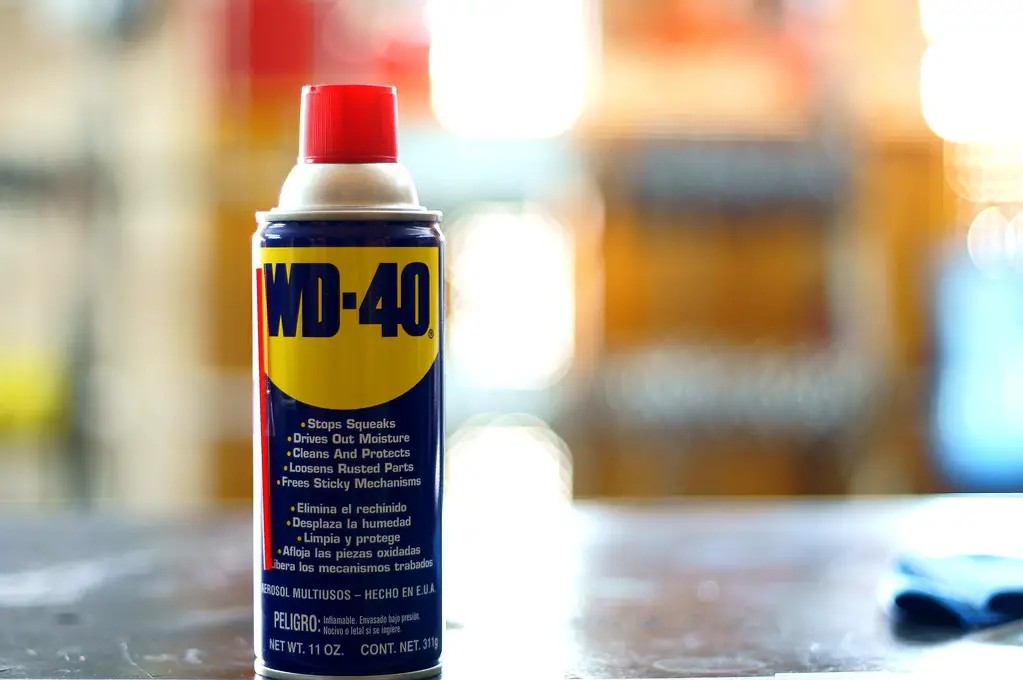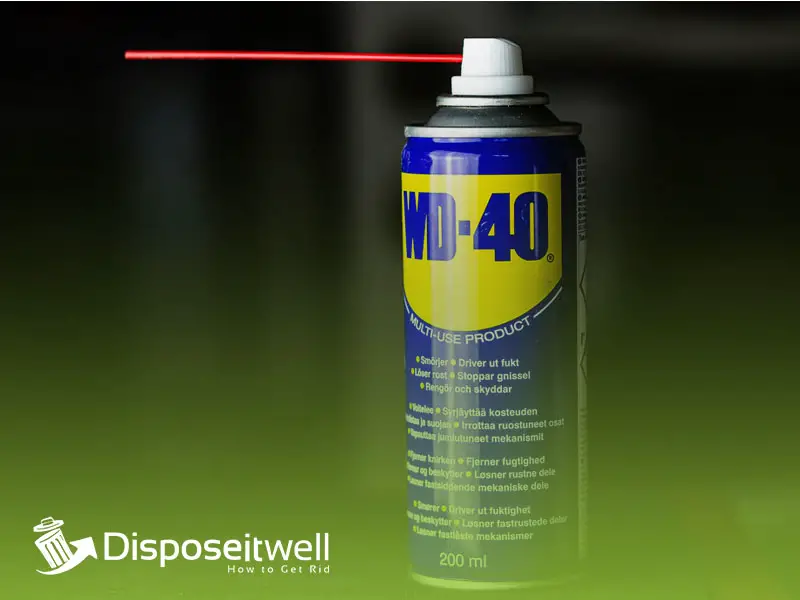At first glance, carpenter bees may appear innocuous, but they can wreak havoc on your property. Renowned for their propensity to drill holes into wood, these bees can weaken your house’s structural integrity, leaving it prone to other pests and weather-related damages. Various methods can be deployed to combat these creatures, but one particularly efficient strategy involves using WD-40. In this guide, we’ll delve into the world of carpenter bees, learn how to identify them, and explore how to eradicate them using WD-40.
Understanding Carpenter Bees
Recognized for their habit of tunneling into the wood to build their nests, carpenter bees are sizable insects. They frequently get mistaken for bumblebees because of their comparable size and look, yet their glossy black abdomen, in contrast to the fuzzy one of bumblebees, differentiates them. Unlike honeybees that live communally in hives, carpenter bees are solitary beings. They carve out individual nests in wood, which could potentially mean serious issues if the wood they’re nesting in forms part of your home. (new)
Identifying Carpenter Bee Infestation
Carpenter bee infestations can be identified by the presence of round, half-inch holes in wooden structures. Typically, these holes are located near the corners or edges of the wood, accompanied by a noticeable amount of sawdust on the ground or the wood surface. The sight of bees flying into and out of these holes, or hearing a distinctive buzzing sound emanating from the wood, are other indicators of an infestation.
Why WD-40 to Combat Carpenter Bees?
WD-40, a household lubricant with a myriad of applications, is an effective insect repellent that manages to suffocate the bees and make their nests too slippery to inhabit. Readily available in most hardware stores, WD-40 is user-friendly and doesn’t pose any risk to humans or pets, and is therefore perfect for those looking to undertake pest control on their own.
How to Get Rid of Carpenter Bees WD40: A Detailed Procedure

Step 1: Prioritize Safety
Before embarking on this mission, ensure you’re clad in protective clothing and eye gear. Carpenter bees can resort to stinging if they perceive a threat, and you wouldn’t want to be on the receiving end of their defense mechanism. Additionally, ensure you’re using the original WD-40 formula and not any specialty variants. (new)
Step 2: Locate the Nest
Identify the half-inch holes on wooden surfaces like eaves, decks, and fences that the carpenter bees use as entry and exit points. Once the nest is located, you can gear up to deploy the WD-40.
Step 3: Apply WD-40 into the Hole
Spray the WD-40 directly into the nest, ensuring you thoroughly drench the interior. This action will asphyxiate the bees and make their movement from the nest challenging. Position the can approximately six inches from the hole and spray for several seconds. You may discern a buzzing noise emanating from the hole as the bees react to the WD-40.
Step 4: Seal the Nest
Post-WD-40 application, apply a sealant to block the hole. This prevents other pests from exploiting the hole to establish a new nest. Wood putty, caulk, or a wooden plug can be used to seal the hole, ensuring the sealant securely and entirely fills the hole.
Step 5: Repeat if Necessary
Monitor the area over the next few days for any signs of continued bee activity. If bees persist or new holes appear, repeat the process. While it may require several attempts to fully eradicate the bees, WD-40 is a potent tool for this purpose.
Alternative Strategies to Eliminate Carpenter Bees
If WD-40 doesn’t appeal to you or doesn’t yield the desired results, there are alternative methods to consider:
Traps
Carpenter bee traps entice bees into a container from which they can be safely removed. These traps are easy to operate and proficient at capturing bees, and are readily available for purchase online or at your local hardware store.
Insecticides
Insecticides offer another viable option to exterminate carpenter bees. While they’re effective at eliminating bees, they can potentially harm humans and pets. If you opt for insecticides, adhere to the instructions diligently and don protective gear.
Natural Alternatives
Natural solutions, such as citrus spray, lavender oil, or almond oil, can help deter carpenter bees. However, they may not be as potent as WD-40 or insecticides and may require more time to show effectiveness.
Preventing Carpenter Bees Infestations
Prevention is always better than cure. To avert carpenter bees from establishing nests on your property, consider the following measures:
Paint or Stain Wooden Surfaces
Carpenter bees are less likely to burrow into painted or stained wood. Therefore, coating your wooden surfaces can act as an obstacle.
Opt for Synthetic Wood
Consider using synthetic materials, like plastic or composite material, which do not appeal to carpenter bees due to their different texture and scent compared to natural wood.
Seek Professional Assistance
If you’re dealing with a severe infestation or do not feel comfortable contending with carpenter bees, professional pest control services can evaluate your situation and offer a safe and effective resolution.
FAQs
Is WD-40 pet-friendly?
Yes, as long as it’s appropriately used and the area is well-ventilated, WD-40 is safe for pets.
Can WD-40 be used on painted wood surfaces?
Absolutely, WD-40 can be applied on painted wood surfaces to deter carpenter bees.
How quickly does WD-40 eliminate carpenter bees?
While it may take a few days for WD-40 to fully eradicate the bees, a reduction in activity should be evident shortly after application.
Can natural remedies deter carpenter bees?
Natural remedies such as citrus spray, lavender oil, or almond oil can help deter carpenter bees, but they are not as potent as WD-40 or insecticides.
What measures can I take to prevent carpenter bees from nesting on my property?
Preventive measures include painting or staining wooden surfaces, using synthetic wood, and engaging professional pest control services.
Conclusion
If left unchecked, carpenter bees can inflict considerable damage to your residence. Although numerous techniques exist to remove them, employing WD-40 is among the most potent and safe options for DIY enthusiasts. Always remember to wear protective gear and securely seal the hole after using WD-40. Should you feel uneasy handling the situation, don’t hesitate to seek professional assistance.
My name is Ella Vicedomine and I’m the founder of this blog. The aim is to start this informational blog to guide people on how to dispose of waste things around in the house but in the right way.


